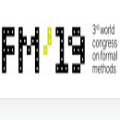Frequency modulation (FM) and phase modulation (PM) are well-known synthesis methods, which have been deployed widely in musical instruments. More recently, some synthesisers have implemented direct forms of FM (as opposed to PM), allowing, at least as part of their design, for higher-order modulation topologies. However, such implementations are affected by well-known difficulties that arise in the modulation of frequency, which are normally solved by the use of PM. In this article, we analyse these problems and using a direct comparison with PM, we put forward a solution for the direct application of FM in higher-order modulation arrangements. We begin by reviewing the theory of first-order FM, contrasting it to PM. We then proceed to develop a formulation of second-order FM which is equivalent to the issue-free PM synthesis, and present a closed-form expression for the evaluation of the second-order FM spectrum. We then extend the principle to higher-order topologies, by advancing the concept of an FM operator, analogous to the one used in PM instrument designs. From this we demonstrate that feedback FM is also a practical possibility. Finally, we complement the paper by giving a reference implementation in C++.
翻译:暂无翻译




